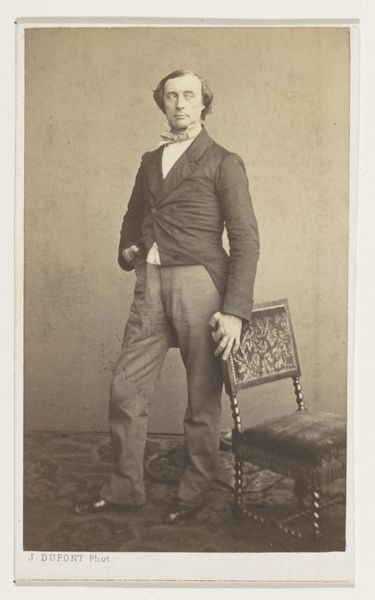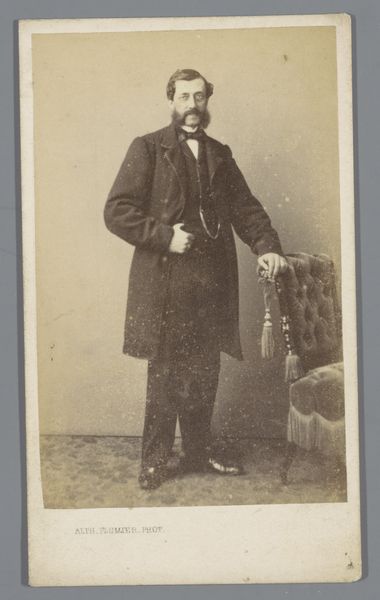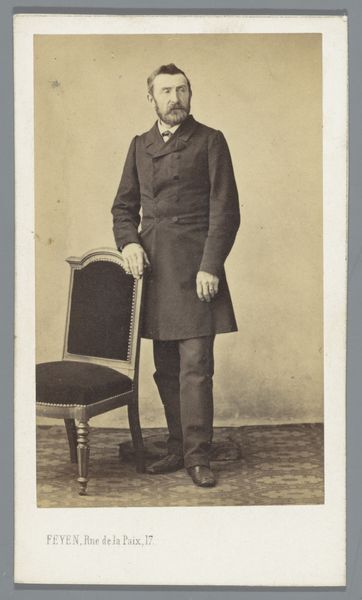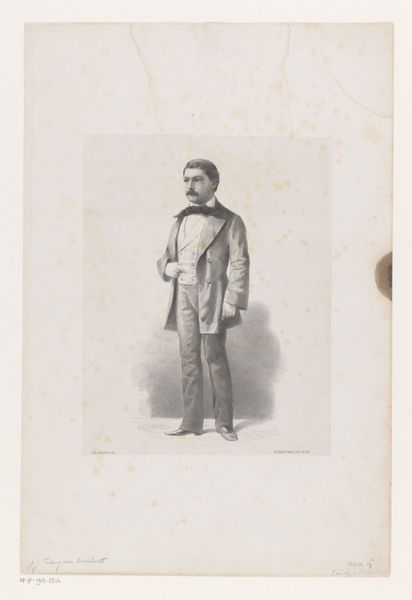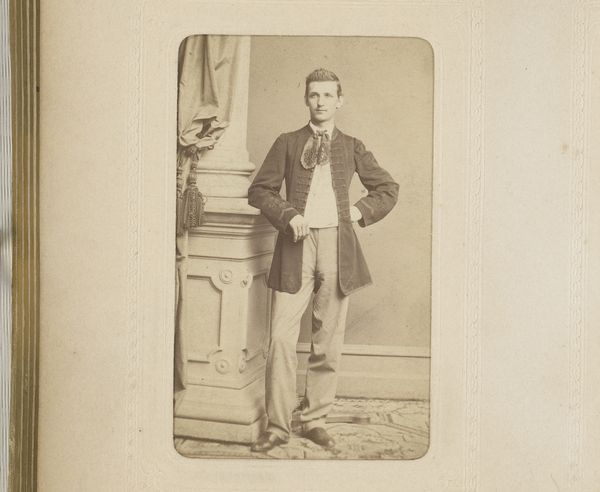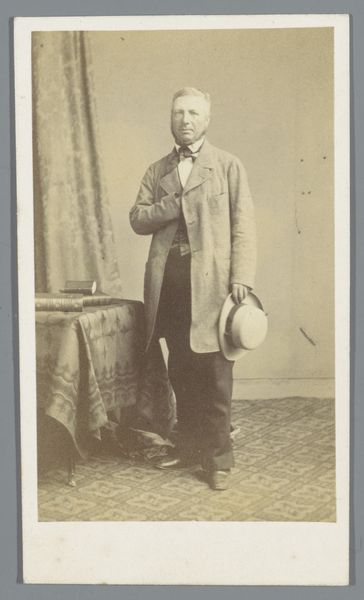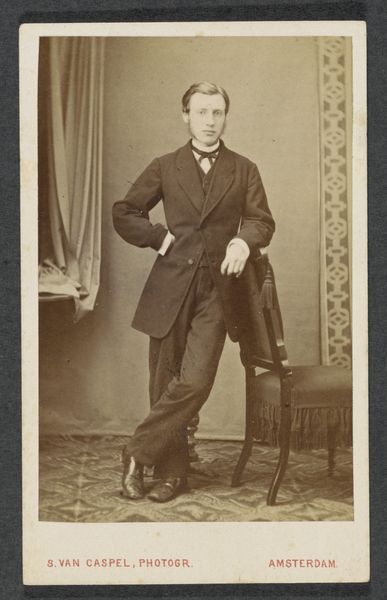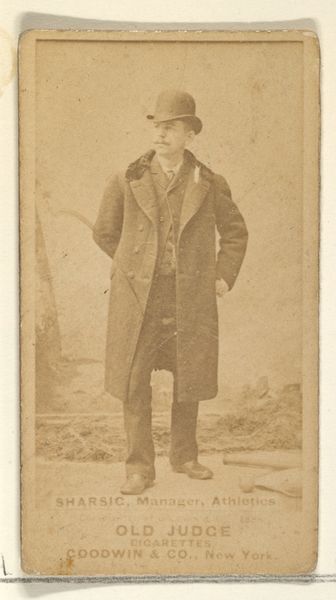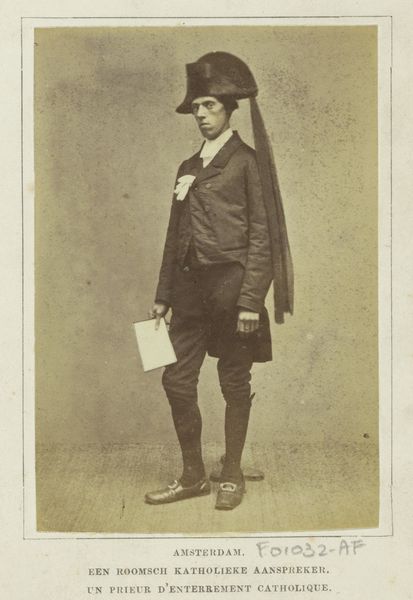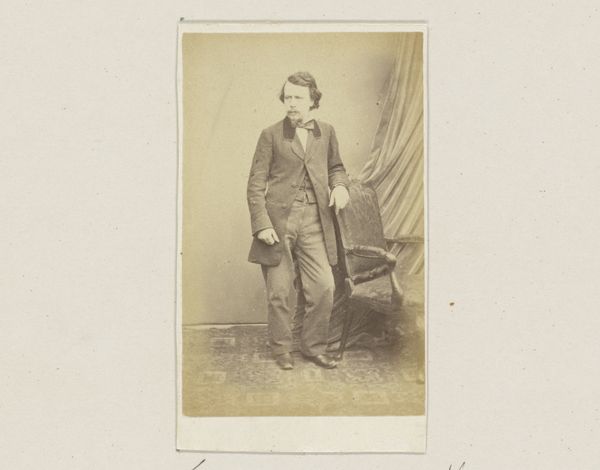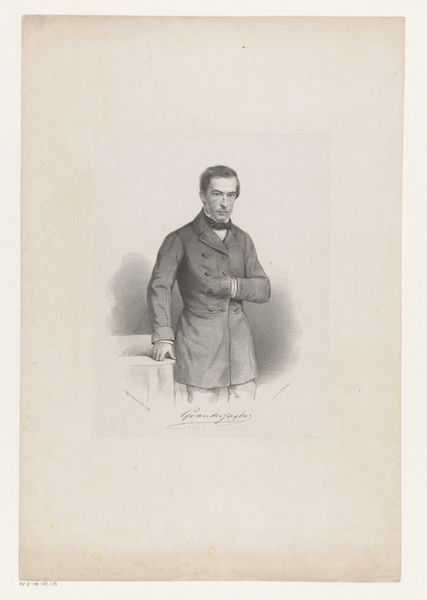
drawing, print, etching
#
portrait
#
drawing
# print
#
etching
#
historical fashion
#
romanticism
Dimensions: height 342 mm, width 246 mm
Copyright: Rijks Museum: Open Domain
Editor: This is a portrait of Gerard Edouard Henri Malinvaud, made in 1848 by Auguste Raffet. It appears to be a print or etching. It gives me a sense of rigid formality. What strikes you most about this piece? Curator: Beyond the formal portraiture, I see a potent representation of 19th-century masculinity and class. Look at the detailed rendering of his clothing – it speaks volumes about societal expectations and privileges afforded to men of his standing. How do you think his pose reinforces or challenges those expectations? Editor: He does look rather self-assured, doesn't he? I guess that confident stance and carefully chosen attire do convey power. But does it also say something about individual agency during that time? Curator: Absolutely. Consider the revolutions brewing in Europe during 1848. Portraits weren't just about capturing likeness; they were about projecting an image. Who was Malinvaud? Was he part of the revolutionary wave, or clinging to traditional hierarchies? The print, with its capacity for reproduction, potentially allowed this image to circulate and solidify his public identity. Editor: I hadn't thought about the revolutions! It's easy to just see a stuffy old portrait. The act of making and distributing a print suddenly seems so much more… political. Curator: Exactly! Consider how artistic choices always operate within political landscapes. It encourages us to analyze art, not as isolated objects, but as active participants in shaping cultural narratives. How does understanding that impact your initial interpretation? Editor: I now see it as an assertion of identity during a time of huge societal change. Not just a picture of a man, but an active declaration of his place in a shifting world. Curator: Precisely. It shows the value of contextualizing artwork. Editor: This was really interesting! I learned that considering the social and historical context makes artwork far more profound.
Comments
No comments
Be the first to comment and join the conversation on the ultimate creative platform.

